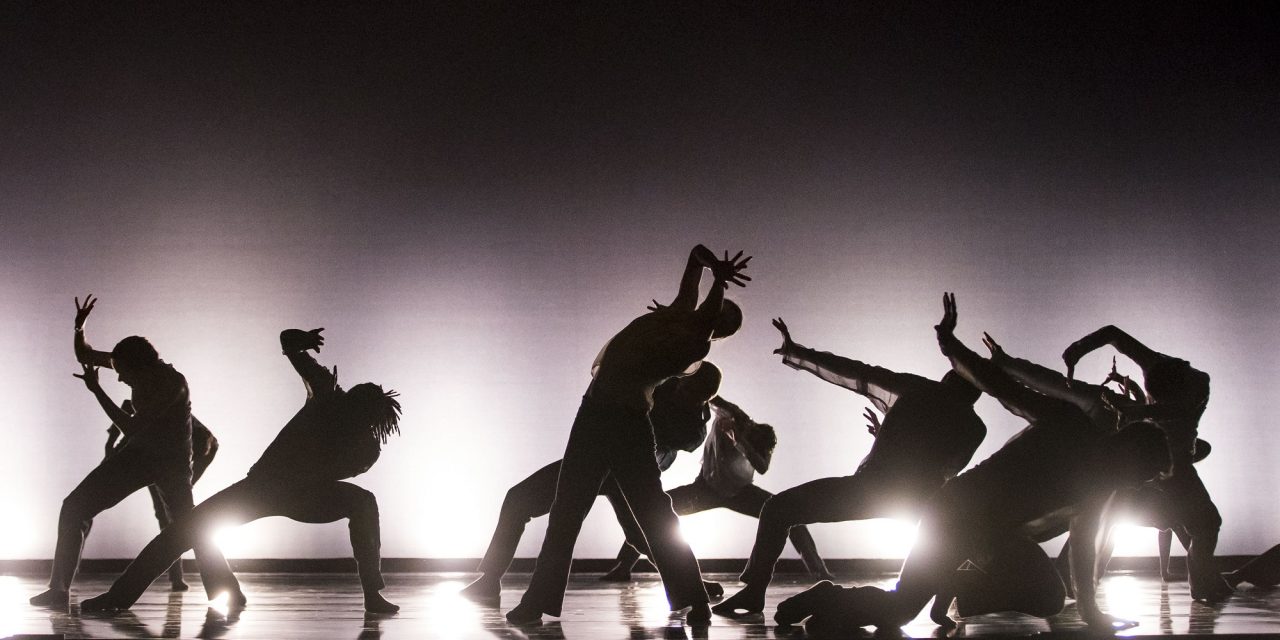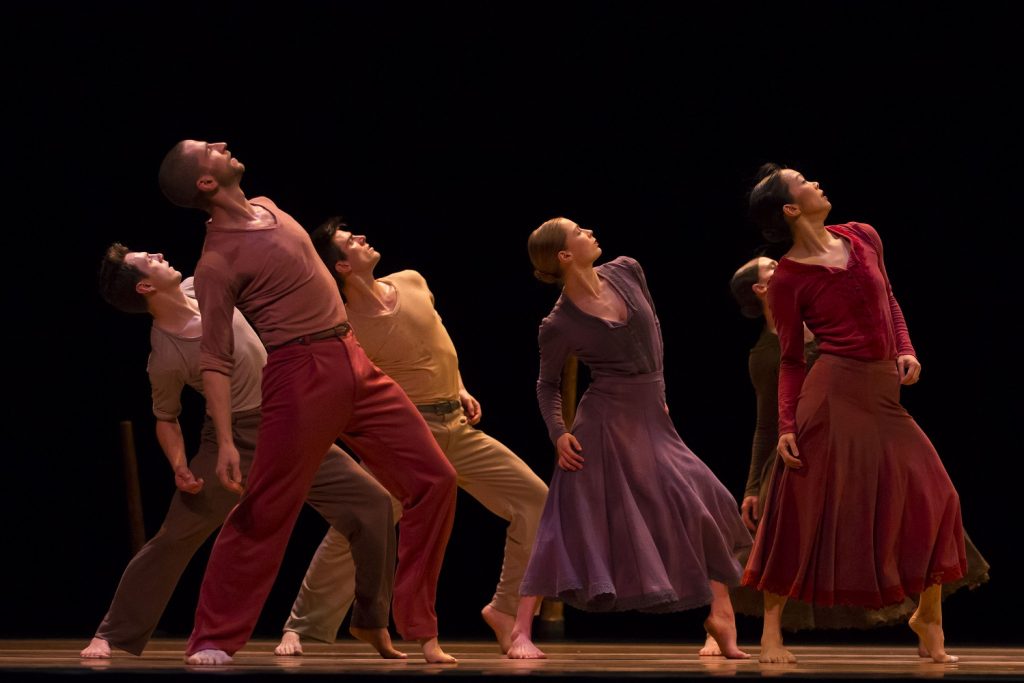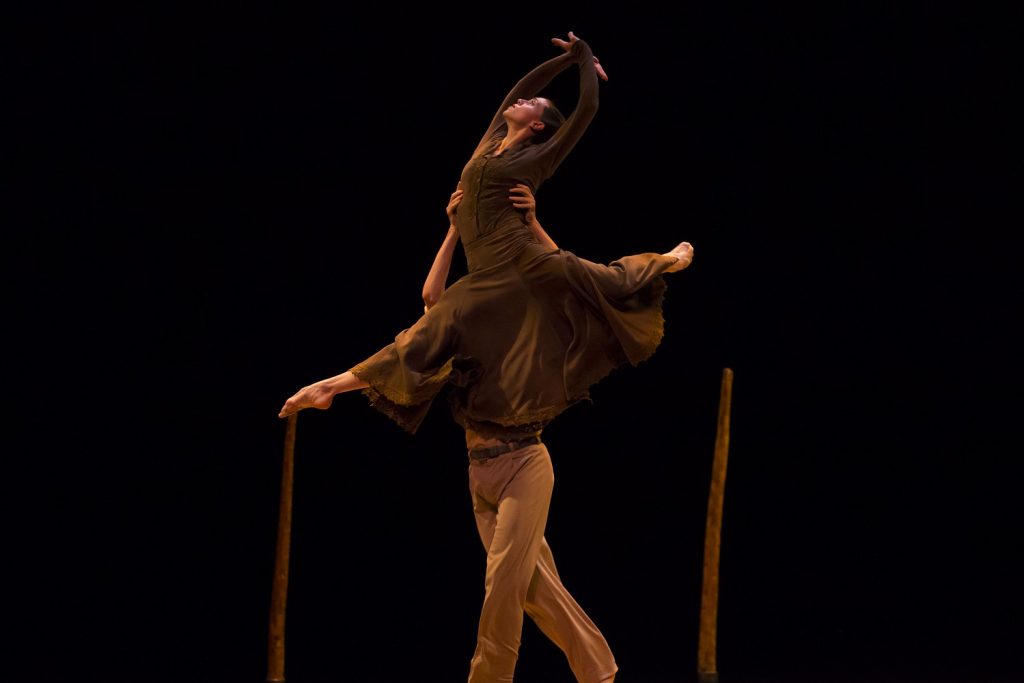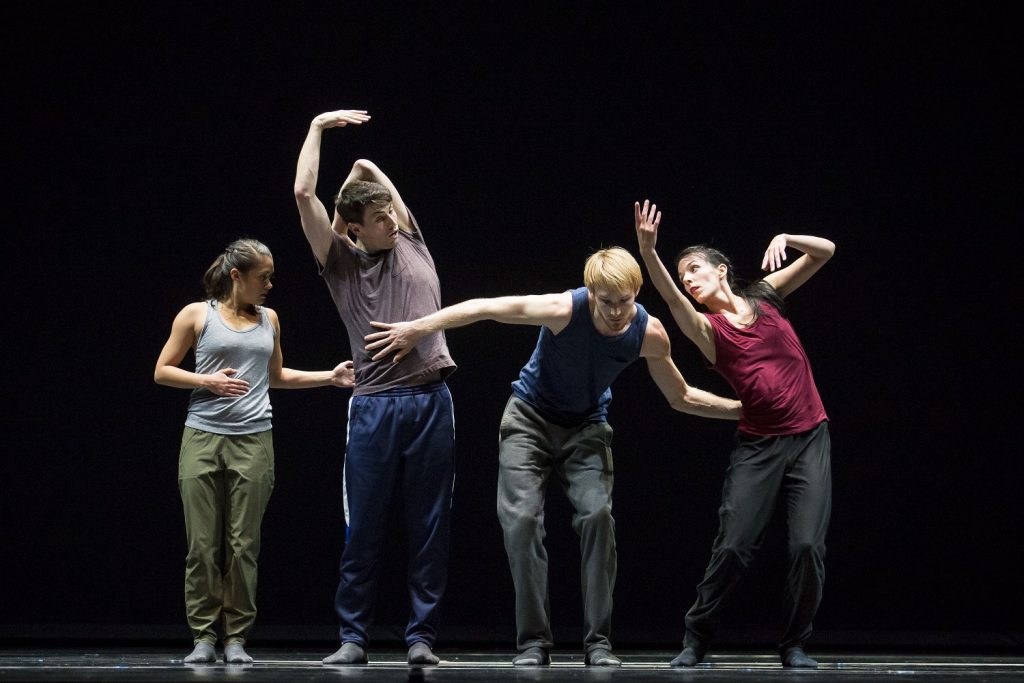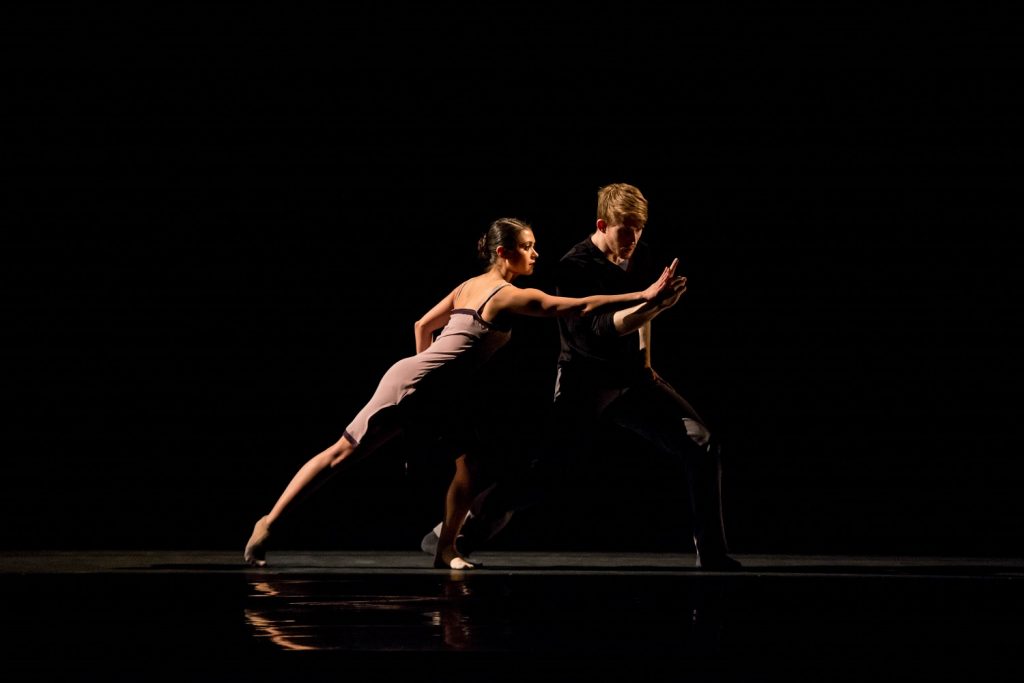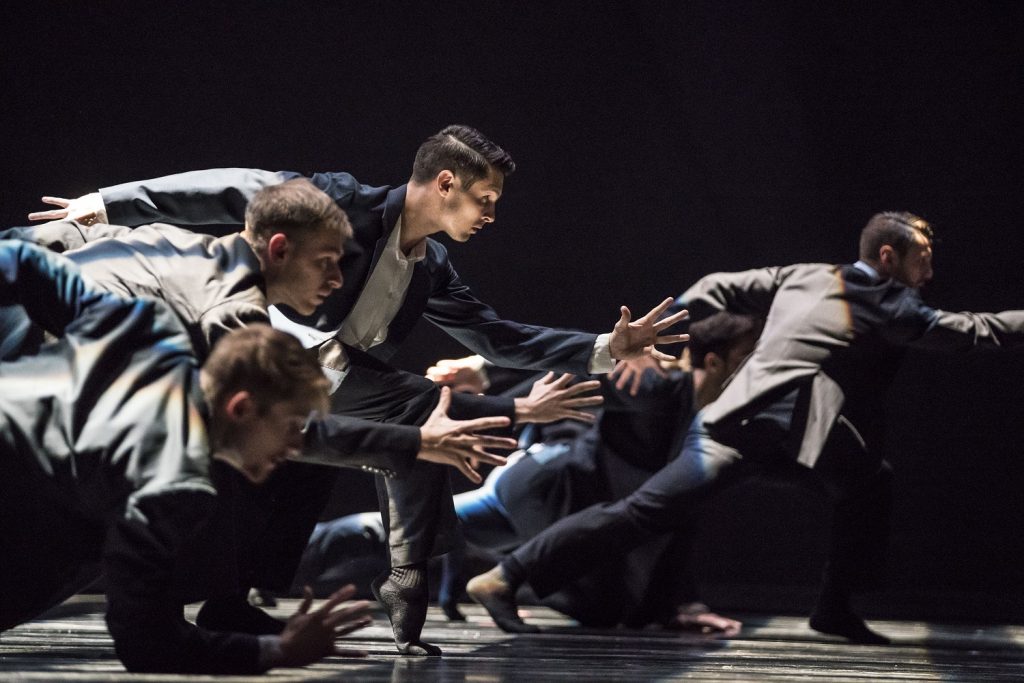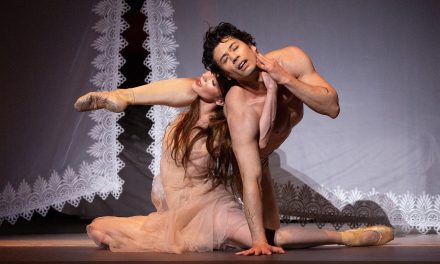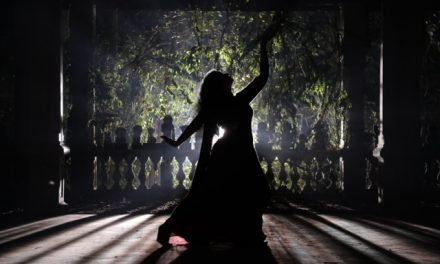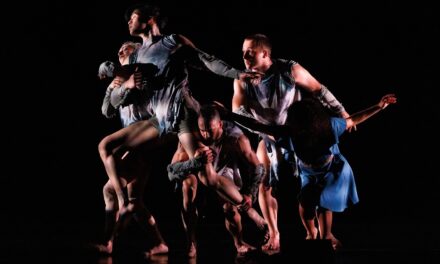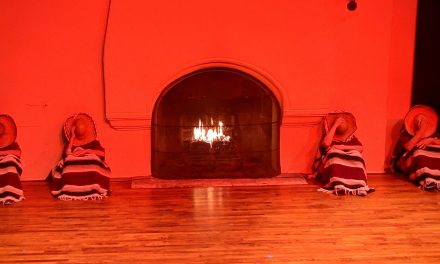From modest beginnings at the Lou Conte Dance Studio at LaSalle and Hubbard Streets in 1977, Hubbard Street Dance Chicago has become an internationally acclaimed company with a cast numbering in the teens. Conte led the company for 23 years and during that time he nurtured emerging choreographer as well as created relationships with dance artist who were well established. A few of those choreographers included Nacho Duato, Daniel Ezralow, Jiří Kylián, Ohad Naharin, Lynne Taylor-Corbett and Twyla Tharp. The artistic directors that followed Conte expanded these relations to make Hubbard Street Dance Chicago what it has become.
The current Artistic Director, Glenn Edgerton, joined the company in 2009 after enjoying an international career as a dance and director, performing with the Joffrey Ballet and the Nederlands Dans Theater (NDT). He was the director of NDT1 for ten years and from 2006 to 2008, he directed the Colburn Dance Institute at the Colburn School of Performing Arts here in Los Angeles.
The company performed on Thursday, January 24, 2019 at the beautiful Musco Center for the Arts in Orange, CA. to a well filled house, and the audience was far from disappointed. Witnessing the outstanding cast of dancers was in of itself a complete experience. Added to that, the four works choreographed by Nacho Duato, William Forsyth, Alejandro Cerrudo, and Crystal Pite, presented an evening of dance to remember.
Jardi Tancat was an earthy and very human work created by Spanish modern ballet dancer and choreographer Nacho Duato to songs by Spanish singer Maria del Mar Bonet. With a brown floor covering to represent farm acreage and wooden stakes of different heights lining its border, six dancers costumed in muted, but elegant earth tones performed movement representative of toiling the soil, watching over their crops and eventually harvesting them. The set and costumes were designed by Duado. They aided one to see and feel the heaviness of the work, the people’s connection to the earth, and their dependence on nature’s blessings.
Duato’s choreography was very much a modern dance style which, through his use of the dancers’ torsos and backs and his use of weighted movement, grounded them to the Earth’s surface. The phrasing was musical and deeply represented the feeling one received from the songs, even if one could not understand the words. The gorgeous cast included Rena Butler, Myles Lavallee, Kellie Epperheimer, David Schultz, Adrienne Lipson, and Andrew Murdock. Nicolás Fischtel’s lighting design enhanced the feeling of being outside in an isolated field.
The second work on the program was titled N.N.N.N.. Choreographed by William Forsythe in 2002, this complex, energetic and humorous piece wore thin about three quarters the way through. The intricacy became predictable and the sounds created by the dancers as they intertwined their limbs and bodies (a satirical take on George Balanchine came to mind) was no longer funny.
Beginning with one dancer, Alicia Delgadillo, flexing and straightening her arm, this rebound style of movement was expanded to include other joints of the four-dancer cast. I learned during the Q&A that followed the performance, that the dancers had options and were encouraged by Forsythe to make different selections during each performance of the work. This also affected the length; making it last anywhere from 12 to 16 minutes.
The best part of N.N.N.N. was watching the dancers as they connected, disconnected, lifted each other, spun on another around and froze in comedically timed poses. The work was so intricately made that it made me wonder how they remembered it all. The cast included Delgadillo, Florian Lochner, Andrew Murdock, and David Schultz. The dance was performed in silence with the only accompaniment coming from the dancers’ exhales and other brief verbal sounds. Forsythe also designed the costumes, lighting and stage design.
Lickety-Split was a light-hearted dance set to the music by Venezuelan American singer-songwriter and visual artist, Devendra Banghart; costumes by Rebecca M. Shouse; and Lighting Design by Ryan J. O’Gara as recreated by Burke Brown. Couples met, men proposed to women, relationships began and ended, and lovely gatherings took place. This is a simplification of the beautifully crafted work by Alejandro Cerrudo, the work was beautifully crafted, with performances that were sublime. The colors in this dance swathed the space with rich, deep blue and amber hues for the characters in Cerrudo’s creation to form their often-endearing relationships. The ending was powerful with the entire cast walking downstage into a corridor of warmth and comforting light.
Following intermission, the mood shifted into a darker and slightly sinister world created by Canadian choreographer Crystal Pite. Pite began her dancing career with Ballet British Columbia and later joined Ballett Frankfurt under the tutelage of William Forsythe. His influence is apparent, but in no way does she copy Forsythe. Pite has found her own choreographic voice and has recently become internationally recognized as a brilliant choreographer. As a dancer, her work spoke to me kinetically.
Grace Engine opens to a stark, gray stage with one row of florescent lights hung perpendicular to the audience along stage right. A lone male figure walks to the sound of loud footsteps, pausing briefly before moving into a tense and introspective solo. Throughout this work, the designer Jim French’s light shifted from gray, to large amber spotlights briefly blinding the audience, to creating shadowy avenues along the stage.
From the Q&A session, I learned that Pite created this work shortly after the birth of her first child, and while looking out the window of where she lived. Grace Engine has, however, sinister overtones, with visions of silent screams that evoked the famous painting by Norwegian Expressionist artist Edvard Munch. The fifteen dancers, eight women and seven men, all dressed in black suits that presented a unisex effect, competed with one another, formed lines across the back that radiated energy from one end to the other, and created a sense of interacting humanity.
One striking and memorable moment was a sweeping wave of dancers that brought a long line of dancers from offstage, along the back and into a semicircle onstage. I got the impression of a warm summer breeze causing the curtains of Pite’s window to drift gently across her face as she studied the passersby below.
The composer, Owen Belton, met Crystal Pite soon after graduating from Simon Fraser University British Columbia. His music for Grace Engine began with loud footsteps, added in distant train sounds and then combined them into a resonating and enveloping atmosphere that lashed out, churned within and encircled us. He is a very talented composer/musician whose music felt alive.
The wonderful cast included Craig D. Black Jr., Jacqueline Burnett, Rena Butler, Alicia Delgadillo, Kellie Epperheimer, Michael Gross, Elliot Hammans, Alysia Johnson, Myles Lavallee, Adrienne Lipson, Florian Lochner, Ana Lopez, David Schultz, Kevin J. Shannon, and Connie Shiau. The costumes were designed by Nancy Bae.
One hopes that Hubbard Street Dance Chicago will make regular appearances in the Los Angeles area.
For more about Hubbard Street Dance Chicago, click here.
Featured image:

